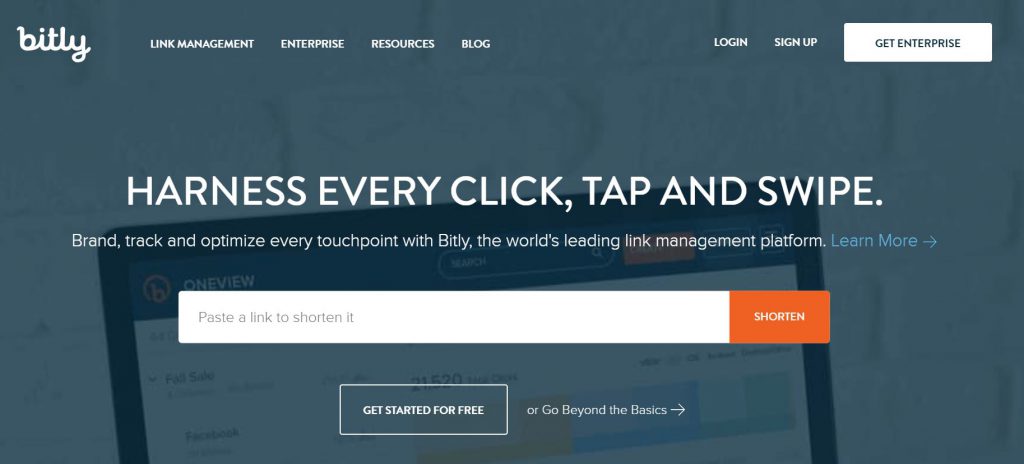8 Ideas for Tracking the Performance of Print Marketing
Discover effective methods for tracking the performance of your print marketing campaigns.

Cassie Viele
Published Feb 25, 2019
 If you re about to deploy a new print marketing strategy (fab flyers, persuasive postcards, or bang-on brochures), it s essential that you think carefully about how you re going to track the ROI of this new print campaign. No one wants to have spent their entire annual ad budget on something that didn t pan out. Guard against unexpected disappointment and arm yourself with information by employing one or more of these performance tracking tips. Before you start, though, we must go over a short pre-flight checklist of performance tracking basics:
If you re about to deploy a new print marketing strategy (fab flyers, persuasive postcards, or bang-on brochures), it s essential that you think carefully about how you re going to track the ROI of this new print campaign. No one wants to have spent their entire annual ad budget on something that didn t pan out. Guard against unexpected disappointment and arm yourself with information by employing one or more of these performance tracking tips. Before you start, though, we must go over a short pre-flight checklist of performance tracking basics: The Basics Of Print Tracking [3 G's]
Goals - (what do you want to achieve?) Think about why you re embarking on a new print campaign. To pull from a classic 1998 Sprite commercial, ask yourself this question - what s my motivation? Are you hoping to drive up sales? Add to your list of email subscribers? Increase web traffic? Turn your chosen goal into a measurable target, such as achieving a 5% sales increase in the 4th quarter, a 25% increase in people receiving your weekly update email, or a 40% bump in upticks on your site s traffic counter. Gather - (what data should you collect?) Determine which of the performance tracking tips will best fit your stated goals, then use the appropriate method to collect your data. The tools you employ will be dictated by your chosen method (quarterly earnings reports, custom fields in your CMS (Client Management System), or Google Analytics web traffic reports). Pull together the key information necessary for you to draw confident and informed conclusions, then move on to the third G. Glean - (what have you learned?) Take a step back and get a bird s eye-view of your results. Did you meet your goals? If so, make note of what worked. No change? Dig in to determine what went wrong and strategize for next time. Mixed bag? Conduct an objective post-mortem that attempts to distinguish the good from the bad, and the effective from the ineffective, then make a plan for future campaigns.8 Print Marketing Tracking Methods
1. Custom or shortened URLs
One of the best ways to measure customer responses is to gather them all in one place. If it s feasible, create a custom URL that links to a unique page on your own site and use a platform such as Google Analytics to monitor site traffic during the dates of the print campaign. Not your cup of tea? Take advantage of free URL shortening services, such as Bitly or Ow.ly, which enable you to convert a longer web address into a shorter URL that takes up less design real estate. Both Bitly and Ow.ly allow you to track visitors via their dashboards.
2. Custom Promo Codes
As you already know, the prospect of saving money is a big draw for consumers. Capitalize on that desire by including a customized promo code on your marketing materials. Boost sales in your children s boutique with a BACK2SCHOOL40 code that promises a 40% discount on all fall clothing or beef up your butcher shop s bottom [round] line with a STEAKISGREAT25 code for 25% off your best cuts. Depending on your goals in this campaign, you can specify that a code can be used at a specific location only or that it is only valid online.Whichever method you choose, it is absolutely essential that you equip your CMS (Client Management System) or POS (Point of Sale) system to track the usage of each unique code. Ultimately, it will be that usage data in conjunction with sales numbers that you will analyze to determine the success of your print marketing efforts.
3. Mention this ad for a discount
Not unlike tip 2 above, you can choose to include a notation on your materials that customers can mention having received your advertisement in order to get a discount. A call to mention this postcard and receive $10 off an oil change will likely have a positive effect on your auto shop s sales numbers, and a note telling clients to say they saw your flyer promotion for a free cut with every color service will almost certainly result in a packed appointment book. As always, be sure to update your CMS or POS to track these items.
4. Coupons
One of the biggest perks of print marketing is the inherent ability to turn a portion of your document into a tangible coupon. Designate a brochure fold, a flyer corner, or just a portion of a postcard to be cut out and presented with a purchase. Whether you choose to offer a free drink with a meal purchase at your restaurant or BOGO drinks at your coffee shop, adding value to your materials makes it more likely they will avoid the recycling bin and be saved for future use! Tracking coupon usage alongside sales data (and by location, depending on the marketing goals you set) will give you a good picture of your print campaign s success.5. Where Did You Hear About Us?
Asking clients and customers where they heard about you may be the most basic method of tracking the effectiveness of any advertising effort. For this approach to be effective, it must be consistent, and you must have a system in place ahead of time to track responses. That means your cashiers, customer service reps, and salespeople must ask the question every time, and your website must prompt customers to answer the question with every sale. Compare customer responses to sales during the time period of your print campaign and look for direct and indirect correlations. Did you sell more donuts to people who received a postcard in their mailbox? Was the spike in mattress sales a result of the posters you hung up in high traffic areas around town? A discerning eye will be able to weed out the spurious factors and get to the heart of the matter. [caption id="attachment_3815" align="alignnone" width="700"] Free-Photos / Pixabay[/caption]
Free-Photos / Pixabay[/caption] 6. Hashtag this!
Are you social media-savvy? Consider adding a hashtag to your print materials along with a call to action (CTA) to the reader to share something on one of your social media pages with that hashtag. Encourage your grooming salon s customers to snap a #ilovemypup selfie with their pet and post it on your Facebook page or request the clients of your financial advising firm ask questions on Twitter and tag them #askmyadvisor. Keep an eye on the popularity of your hashtag throughout the campaign and be sure to interact with each post in a way that matches up with your brand.7. Use QR Codes
Adding a QR code to your materials is nowhere near as complicated as it may seem at first glance. There are dozens of free and pay QR (Quick Response) code generators available with just a quick Google search. Equip your QR code to direct customers to a specific web page or your online store, then track visits and sales, or use the code to provide customers with a unique coupon code, event information, or product details. Send out a postcard promoting the newest car model your dealership has on the lot and include a QR code that links directly to the vehicle s specs, customer reviews, and price. Ramp up ticket sales for an upcoming concert by placing a QR code on every poster that lands fans right on your venue s ticketing page. However you choose to utilize Quick Response coding, ensure that you monitor web traffic on your unique pages and compare that data with your sales figures to gauge overall effectiveness. [caption id="attachment_3816" align="alignnone" width="700"] wir_sind_klein / Pixabay[/caption]
wir_sind_klein / Pixabay[/caption] 8. Track overall sales during the campaign
A fairly basic and hands-off approach to evaluating the success of print marketing is to simply pull up sales (or attendance) data from the time period of the campaign and infer a conclusion. If you elect to use this method, it s important to remember that correlation does not always imply causation. That is, the mere fact that your store saw a jump in 4th quarter sales doesn t mean all those new sales were a result of the postcards you sent out in October, November, and December. You may end up with a better picture if you compare current year 4Q data to the same quarter in previous years where you did not engage in a coordinated marketing campaign. Without tracking the source of the new sales, your results will be out of context. For that reason, this method leaves something to be desired.Let s land this!
In every scenario above, the success and utility of any tracking method ultimately depends on how well you ve thought through your capture mechanism before beginning. A super professional-looking QR code on a nice, shiny postcard is useless as an information-gathering tool if you haven t set up a way to count traffic and outcomes. Remember - proper planning prevents poor performance [tracking]!